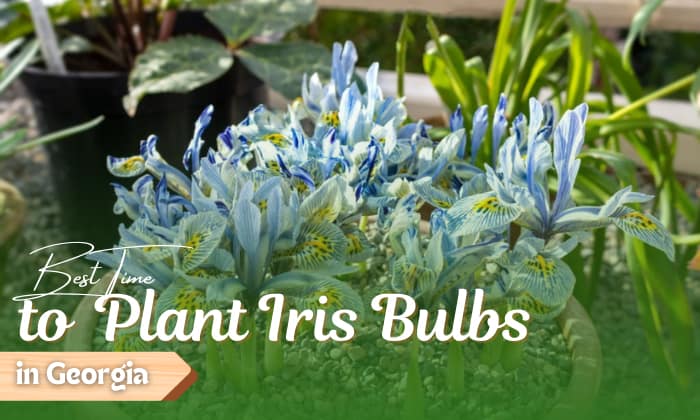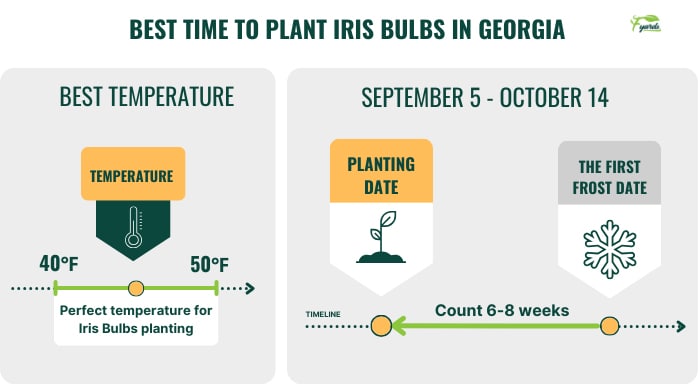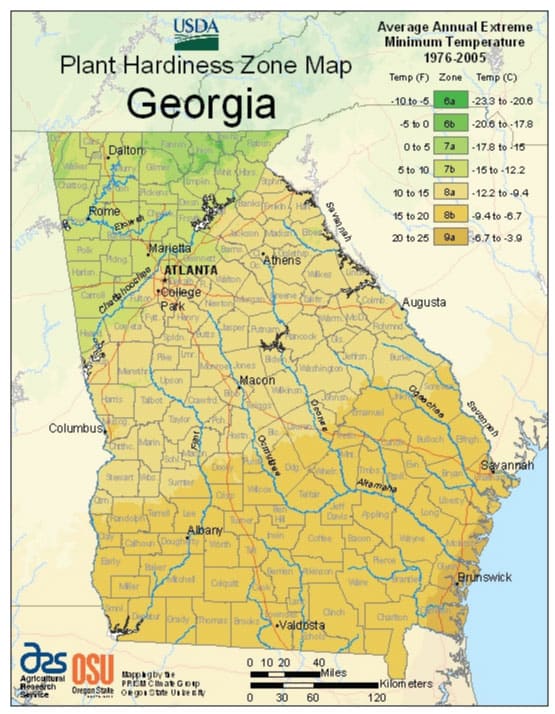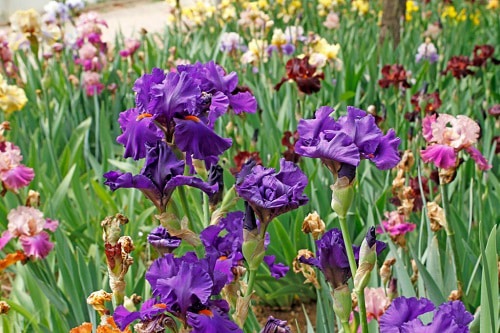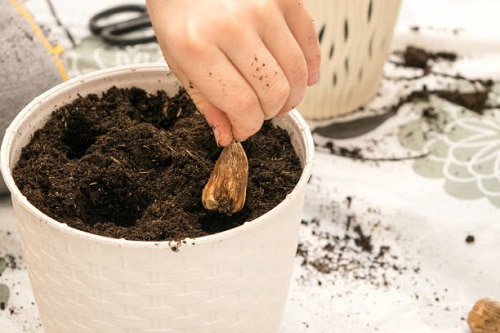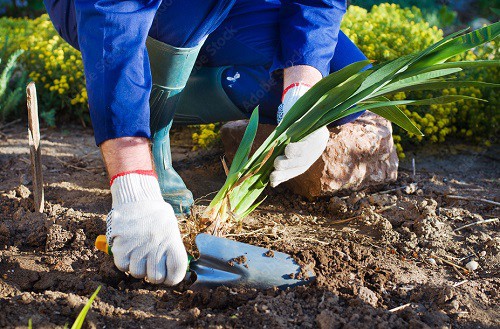When to plant iris bulbs in Georgia? The optimal time frame that allows their root system to settle in before the colder months of winter starts is September 5 until October 14 for the state’s four USDA zones.
Georgia, with its humid subtropical climate of long summers and short winters, is well-suited for growing irises. Whether you’re a gardening newbie or an expert, look through this guide for helpful cultivation tips and more.
Table of Contents
Best Time to Plant Iris Bulbs in Georgia
How late can you plant iris bulbs in Georgia? Before we get into the specific planting calendar, you should know that the Empire State of the South is situated in multiple zones. Use this chart for reference on Georgia’s hardiness zones:
- 6a
- 6b
- 7a
- 7b
- 8a
- 8b
- 9a
The universal rule for planting iris bulbs in Georgia is during the autumn season, 6-8 weeks before the first frost, when night temperatures average 40 to 50 degrees. With this calendar, you can expect your irises to bloom in the spring.
For the specific planting dates per zone, refer to the table below:
| Zone 6 | September 5 |
| Zone 7 | September 17 |
| Zone 8 | September 26 |
| Zone 9 | October 14 |
Tips for Successful Iris Bulb Cultivation in Georgia
Growing iris bulbs successfully needs more than just knowing the ideal time of the year. Make sure to follow these tried-and-true guidelines:
1. Choosing A Site
Irises grow best in soil with the following characteristics:
- Fertile and well-draining soil is a must to prevent any waterlogging issues that can cause bulb rot.
- If you’re unsure whether your chosen site has proper drainage, you can check by digging a hole with a depth of 12 inches and filling it with water. If the liquid’s all gone in 8-10 hours, then you’re good to go.
- Planting in slopes or raised beds can also help with drainage.
- If your soil is of the heavier clay type, you can opt to add sand or humus.
- A slightly acidic pH level of 6.8 is ideal for irises, but 6.0 to 7.5 is If you want to achieve the most optimum range, you can add lime or sulfur to the ground as your soil test dictates.
- Iris bulbs develop best when they have sun exposure for 6-8 hours daily. The only time irises benefit from shade is when your area is too hot, going over the ideal range of 45-75℉.
2. Planting
- To grow iris bulbs, what you do first is prep a hole that’s 10 inches wide and 4 inches deep.
- By following the recommended dimensions, you can make sure the top side of your bulb sits just below the ground with the tip pointing upward.
- If you’re planting multiple cultivars, it’s better to group them into clusters for aesthetics, such as along a fence or among rocks. Aim for a distance of 12-24 inches between the bulbs.
3. Caring
- Iris bulbs require 1-3 inches of water weekly. If your area experiences more rainfall than this, it’s better to reduce irrigation to avoid waterlogging.
- Before you add any mulch, make sure to remove the weeds by hand first. This will help keep your bulbs damage-free.
- Lay out the mulch of your choice with a maximum thickness of 2 inches, and make sure it doesn’t make contact with the bulbs to prevent trapping water that can cause rot.
- Make deadheading a part of your regular routine. Removing spent flower blooms encourages regrowth and improves overall plant health.
- Pruning iris to about 6 inches above the soil during the fall and winter can help with disease prevention.
4. Harvesting
- You can tell your irises are ready to be cut for floral arrangements when color begins to project out of the leaves.
- Just like with most flowers, it’s best to harvest irises either early in the morning or after sunset. Harvesting when the sun is high in the sky will affect the firmness of the stems and the vibrancy of the colors.
5. Iris Bulb Varieties
Here are the varieties commonly grown in Georgia:
- Aril Iris
- Bearded Iris
- Crested Iris
- Dutch Iris
- Dwarf Iris
- German Iris
- Japanese Iris
- Louisiana Iris
- Siberian Iris
- Spuria Iris
Conclusion
When to plant iris bulbs in Georgia? Your best bet is to avoid the extremes of summer and winter. Even in a temperate climate, fall is the best planting season, whether you’re in the northern mountainous regions or the southern coastal areas.
It’s not enough to take note of the timing. You should also pay careful attention to the moisture levels and soil conditions, so get your gloves on and follow our tips! It’s time to make your dream iris garden come true.

Hi, I am William – Floridayards’ digital content creator. My job is to find answers to all your concerns with thorough research and our team’s expert advice. I will also bring you honest reviews on the best products and equipment for raising your beautiful garden. Please look forward to our work!


